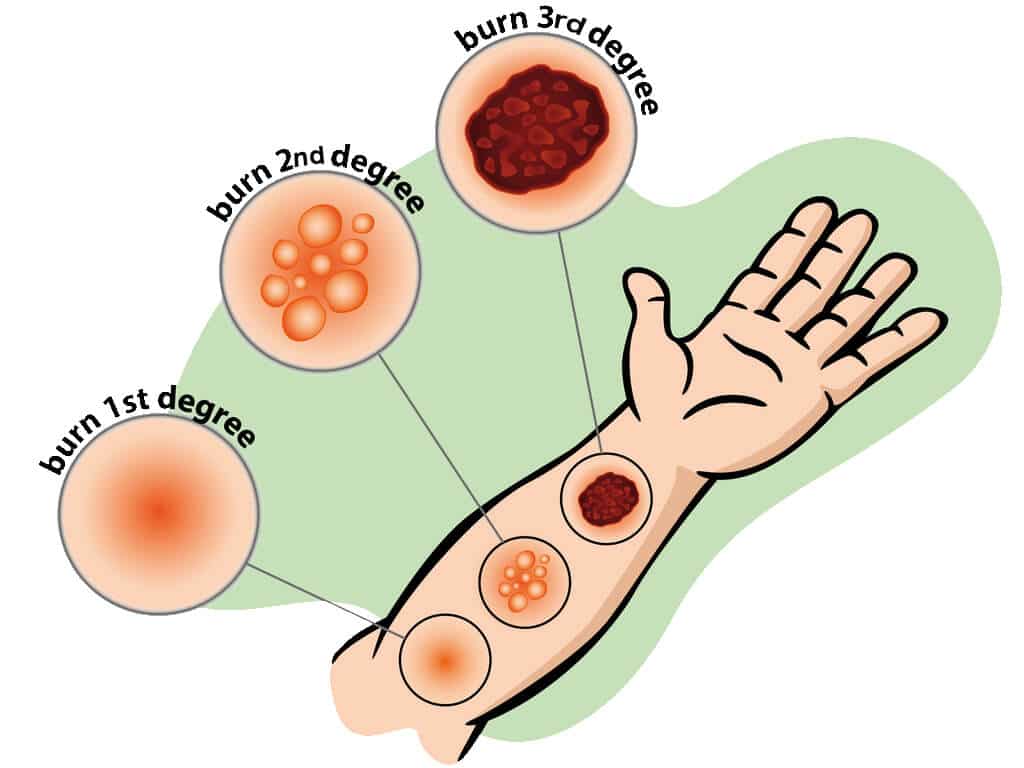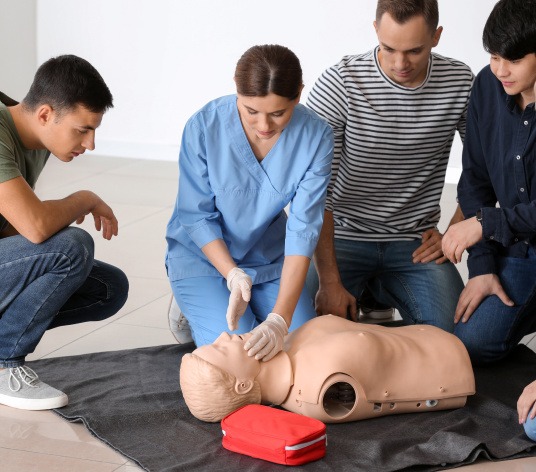Chapter 23: Burn Emergencies
Burns are injuries to the skin—the body’s largest organ—and the way you treat them depends on how deep the damage goes. They can happen for all sorts of reasons, including
- Fire
- Hot liquids
- Chemicals
- Faulty appliances
- Motor vehicle accidents
You’ll also see electrical burns and common kitchen accidents, like touching a hot stove or boiling water.
Symptoms can range from mild to severe. A person might have swelling, blisters, pain, or numbness. The skin may peel or ooze fluid. In more serious cases, the person may go into shock or have trouble breathing. Depending on the severity, the skin could look red, white, or even charred.
There are three levels of burns to know.
- A first-degree burn only affects the outer skin layer and usually causes light pain, swelling, and redness.
- A second-degree burn reaches deeper and often includes blisters along with pain and swelling.
- A third-degree burn is the most serious. It can destroy tissue, and the skin may appear black or white or feel completely numb.

As part of your CPR and First Aid Certification, you’ll learn not just how to help, but what to avoid. Don’t apply ointments or home remedies to serious burns. Skip the ice, don’t remove anything stuck to the skin, and never pop blisters or use sticky dressings. If the burn is severe, don’t offer food or water and avoid touching the wound directly.
First Aid Steps
- Always check that the scene is safe, especially if there’s any chance of electrical exposure.
- Put on protective gear if available. If someone’s on fire, tell them to Stop, Drop, and Roll to smother the flames.
- Once the fire is out, cover them with a wet blanket, then switch to a dry one.
- Call 9-1-1 if the burn is serious or if the area becomes unsafe.
- Remove jewelry or clothing only if it’s not stuck to the skin.
- Cool the burn with cold (not ice-cold) water until the heat subsides.
- Cover the burn loosely with a dry, sterile dressing.
- If the person stops responding, start Cardiopulmonary Resuscitation (CPR) or use Hands-Only CPR if that’s what you know.
By the end of this chapter, you’ll be better prepared to respond to burn emergencies as part of your Online CPR/AED and First Aid Combo Course.

